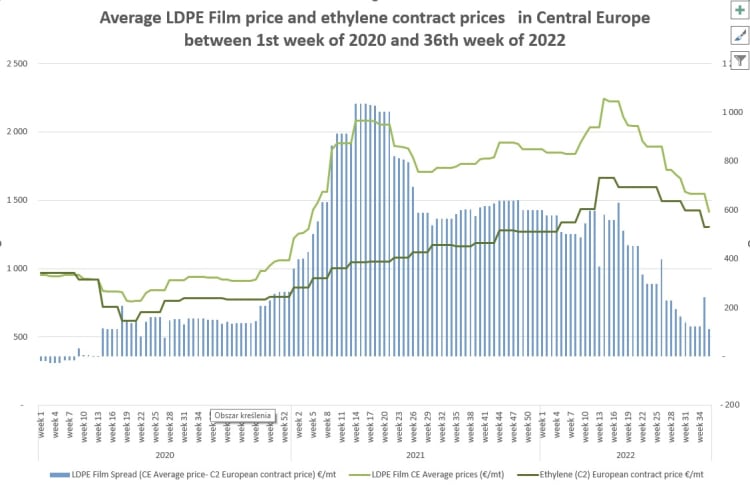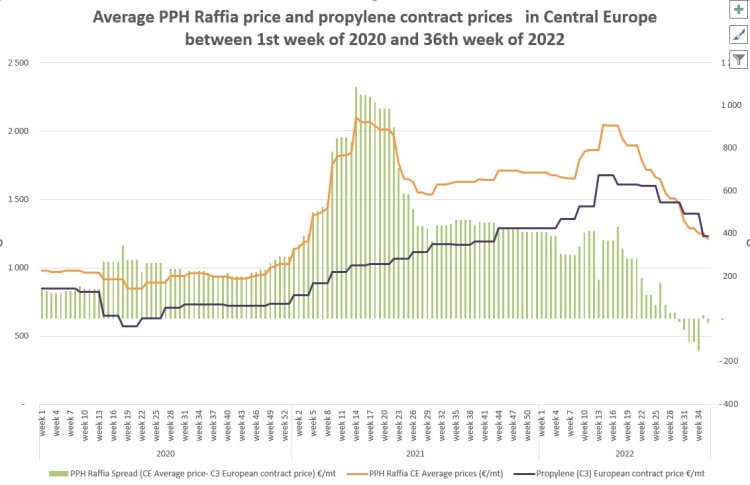Due to the negative cash margin, some of the polymer manufacturers start to reduce the capacity of their factories and reduce their production. This can already be felt, but for now there are few complete shutdowns in Central Europe, however, by mid-to-late October, some of the non-integrated, small-capacity producers will be forced to shut down. Unless prices and demand start to rise. There is a chance for that too, since there will be Christmas this year as well. This is likely to bring a revival in demand. Now, when the players in the plastic value chain have low stocks of polymer and plastic products, last-minute purchasing decisions can lead to a sudden but short-lived price increase this year.
However, the problems will remain with us next year as well. A lot of companies are likely to extend the winter shutdown period; they stop two weeks earlier than usual in early December; and it is expected that they will start production two weeks later than usual, at the end of January. Of course, those who have sufficient financial reserves. The biggest challenge in 2023 will be energy supply and prices. Since most electricity contracts expire at the end of the year, the new contracts - if there are any - will have shorter periods and higher prices. Consequently, electricity prices will be more volatile. This will be the beginning of a new era in the plastics industry. It is no longer only the polymer price change that must be passed on, but also changing energy prices. Plastics converters need to acquire new skills. one must learn to clearly and openly communicate price changes resulting from cost changes to their customers. It is possible that they will have to reveal their cards. The survival and operation of the plastic value chain is a priority for all players. There is no other chance than direct communication. High European plastic finished product and polymer prices are the reality of the near future.

Meanwhile, imports of polymer and plastic finished products that can be delivered in rolls are becoming more and more competitive in Europe. The competitiveness of imports will strengthen due to high European energy prices and constantly decreasing sea freight rates. For the time being, protection against imports is provided by the strengthening dollar and the congestion of European ports. Both will survive in the short term, but industrial policy cannot be based on this. This has to change. Two directions seem logical. One is specialization - we talked about this before 2020. The other is the production of high-quality plastic products with a high recyclate content, creating the feedstock side of this.

We Central Europeans are a bit late in this. Although we produce a lot of recyclate, we use little of it. Until now, we have been busy with the production and export of simpler, mass-produced, virgin polymer-based plastic finished products to Western Europe. We have to change now - we have no other choice - and we have to be at the forefront of plastic recycling. Until now, we have mostly used recyclates to make the finished product cheaper. Now, however, it must be used to make the finished product more valuable. Several good projects have been launched, of which the developments taking place in the field of virgin-recycling compounds stand out. There is also a need for product development on the side of plastic products, i.e. grades with high-quality recycled content that are capable of real, uncompromising substitution in the field of finished plastic products must be created.
This is what we need to focus on, this is where the future of the Central European plastics industry will be.
László Bűdy
my Ceppi



